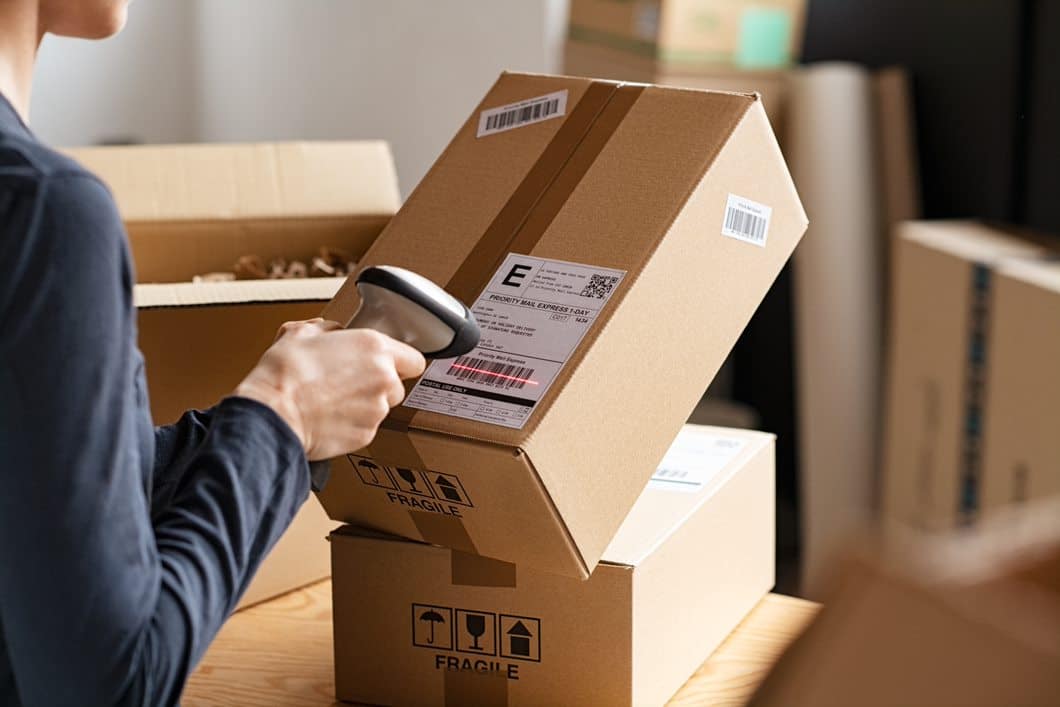3 Reasons to use Returns Technology in Microfulfillment Centers

The global growth in eCommerce has clogged up distribution networks that were originally built to handle predictable volumes and timelines. Today, those networks are trying to manage an ever-growing range and volume of parcels, with accelerated timelines and higher logistics costs.
For many companies, the answer is to get smaller instead of larger.
Why Microfulfillment Centers are Increasing
Microfulfillment centers (MFCs) aren’t a new concept; they have been gaining traction well before COVID hit industries in 2020.
MFCs are a way to scale down a fulfillment network and create more efficient points that are closer to where customers live or work. Typically only requiring a few thousand square feet of space, an MFC stocks fast-moving SKUs to efficiently serve local customers and/or nearby retail locations.
Grocery, convenience stores, and apparel retailers are just a few of the industries flexing to build out more MFCs. Here are a few reasons why:
- Better agility for keeping up with online demand and shifts in inventory
- Smaller centers mean they can be set up in a few months – a fraction of the time it takes to set up a big DC
- Lower overhead costs and faster customer delivery, due to being located in densely populated areas
- Lower emissions as a result of shorter last-mile delivery distances
“We’ve seen examples of micro-fulfillment being up to 10 times quicker than employees walking around [picking] from store shelves. That’s a trend that’s emerging quite strongly, but predominantly within the grocery space right now.”
Tom Enright, Gartner Supply Chain Research Vice President
The Different Models of MFCs
There are varying ways to set up an MFC network, which we’ve summarized below:
Hub and Spoke: A regional DC is the hub of the network, and local MFCs are the spokes.
In-Store Fulfillment Centers: A part of a store is converted to an MFC so that it can serve both in-person and eCommerce shoppers.
Dark Stores: A dark store is both a pick-up location for eCommerce orders (“click-and-collect” orders) and a fulfillment center, but they aren’t open to the public for shopping (hence the name “dark” store). Sometimes, traditional brick-and-mortar stores that couldn’t compete in traditional retail are converted into dark stores to optimize eCommerce services.
Using MFCs for Efficient Product Returns
Besides serving as a more automated and lower-cost fulfillment center, MFCs are well-positioned to handle product returns. Some even manage product returns exclusively, depending on the industry and market.
“…local delivery can optimize costs and savings by three to four times overall with a centralized returns and pickup center. Micro fulfillment centers blend convenience with experience and support different strategies for an online retailer: buy online, pickup in-store, with localized returns.”
Padhu Raman, Project Verte
With MFCs as dedicated returns facilities, companies can more efficiently and quickly handle the disposition of merchandise. Items returned to local facility or store cost less to process than items returned by mail, so MFCs can potentially lower product return management costs significantly for reasons such as:
Seasonality: Items like winter coats or tank tops stay in the local market where they have a higher likelihood of being resold.
Customer Loyalty: Buyers (40%) prefer to make a return to a physical store, and an increasing number prefer to drop off returns at a third-party location rather than the mail.
Sustainability: Nearby return locations that avoid mail-in returns can lower truck emissions and packaging waste.
Implementing Returns Technology for MFCs
MFCs are only as efficient as the returns technology that directs every task and informs every decision within the building.
The best tech solution is a returns management platform that can be implemented at each MFC location, traditional retail location, large DCs and even your 3PL. With an intuitive, customer-facing portal, you can give B2B or B2C customers the choice of where and how to submit their return.
With a consistent and comprehensive technology that’s flexible to each return environment, enterprise organizations can more efficiently manage returns, standardize workflows and lower costs.
The ReverseLogix returns management system (RMS) is a solution that enables companies to streamline return requests, logistics, inventory, and processing – and connect every point in the return ecosystem. Optimize processes, maximize ROI, gain valuable insight and deliver a superior customer experience with each return.
An RMS can Lower the Cost of Returns
Because it manages the end-to-end returns lifecycle, ReverseLogix provides you with advanced analytics for making smarter business decisions and unlocking more value. Instead of bogging down employees or complicating your backend, the RMS opens up warehouse capacity so your people and resources can focus on other company objectives.
- See and use real-time data to discover hidden value, such as identifying recurring issues that increasing returns rates
- Better automation means fewer resources are needed to manage returns, freeing up employees for other important work
- Automate customer notifications to reduce call volume and “Where’s my refund/exchange?” inquiries
- Use ReverseLogix to verify purchases and approve returns, thereby reducing fraud risk
“Returns are at least 50-60% faster than our previous system. We’ve increased our throughput and accuracy because we’re not handling an item as much.”
Global Footwear Retailer
Better Insight, Better Decisions
The best way to lower returns management costs is to minimize product returns in the first place. Because ReverseLogix gives you visibility into the entire returns lifecycle – and can integrate with other supply chain management software – you can unlock entirely new insight for product returns.
- Real-time visibility across the entire returns journey
- More quickly identify manufacturing or product issues that are driving returns
- Use the data to improve product descriptions or other information to give customers more information for smarter purchases
- See meaningful metrics in every module, queue, and order
- Optimize workflows, see what’s working in real-time, and proactively find ways to improve
Improve Automation
ReverseLogix enables customers to make returns from anywhere with a centralized portal, allowing you to create custom automation rules that streamline returns decisions.
- Configurable tools to meet your policies, claims rules, vendor entitlements and approval hierarchies
- Implement guided workflows for receiving, inspecting and grading product returns.
- Automatically approve straightforward returns based on any sequence of desired rules
- Automate even the most complicated returns process enforcement
- Integrate your entire returns ecosystem across all supply chain software systems
